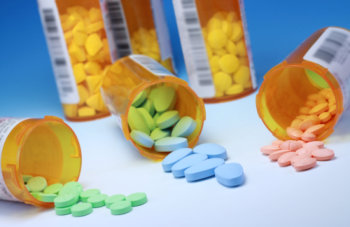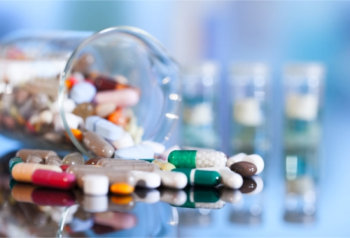 Drugbuddies Pharmacy will hold a FREE drug take-back program once a year. We will announce when our next program will be held. However, throughout the year you can bring your unused medications to our store and we can dispose of them with a disposable medication system that inactivates the medication properly.
Drugbuddies Pharmacy will hold a FREE drug take-back program once a year. We will announce when our next program will be held. However, throughout the year you can bring your unused medications to our store and we can dispose of them with a disposable medication system that inactivates the medication properly.
The system can be used and thrown away in the privacy of your own home. We can also use the system at our store and throw it away in our waste container. All this can be done for a small disposal fee to cover the cost of the product.
Proper Drug Disposal Can Save Lives and the Environment
More than 100 different pharmaceuticals have been detected in lakes, rivers, reservoirs, and streams throughout the world.
Pharmaceuticals are being detected in the environment. There is genuine concern that these compounds can impact humans and aquatic organisms.
A vast array of pharmaceuticals — including antibiotics, anti-convulsants, mood stabilizers and sex hormones — have been found in the drinking water supplies of at least 41 million Americans.
The New York State Health Department and the USGS tested the source of the city’s water, upstate.
They found trace concentrations of heart medicine, antibiotics, estrogen, anti-convulsants, a mood stabilizer, and a tranquilizer.
Even users of bottled water and home filtration systems don’t necessarily avoid exposure. Bottlers, some of which simply repackage tap water, do not typically treat or test for pharmaceuticals, according to the industry’s main trade group. The same goes for the makers of home filtration systems.
In the United States, the problem isn’t confined to surface waters. Pharmaceuticals also permeate aquifers deep underground, source of 40% of the nation’s water supply. Federal scientists who drew water in 24 states from aquifers near contaminant sources such as landfills and animal feed lots found minuscule levels of hormones, antibiotics, and other drugs.
*USA Today. AP: Drugs found in drinking water. Available here. Accessed on February 26, 2010.
Each year in the United States, more than 71,000 children aged 18 and younger are seen in emergency rooms for unintentional overdoses of prescription and over-the-counter drugs.
 More than three in five teens say prescription pain relievers are easy to get from parents’ medicine cabinets; half of teens say they are easy to get through other people’s prescriptions; and more than half say prescription pain relievers are “available everywhere.”
More than three in five teens say prescription pain relievers are easy to get from parents’ medicine cabinets; half of teens say they are easy to get through other people’s prescriptions; and more than half say prescription pain relievers are “available everywhere.”
Medication overdoses are most common among two-year-olds. About one out of every 180 visits an emergency department for a medication overdose each year.
The most common medications accidentally taken by children are acetaminophen, opioids or benzodiazepines, cough and cold medicines, nonsteroidal anti-inflammatory drugs (NSAIDs) and antidepressants.
Among young people ages 12-17, prescription drugs have become the second most abused illegal drug, behind marijuana.
Teens ages 12-17 have the second-highest annual rates of prescription drug abuse after young adults (18-25).
The most recent research on deaths in the U.S. due to poisoning over a five-year period (1999-2004) shows that nearly all poison deaths in the country are attributed to drugs, and most drug poisonings result from the abuse of prescription and illegal drugs.
Teens are abusing prescription drugs because they believe the myth that these drugs provide a medically safe high.
Whether you’re a parent, coach, teacher, or community leader, learn more about how you can do your part to curb teen drug abuse through a hands-on workshop: Maximize your Role as a Teen Influencer: What You Can Do to Help Prevent Teen Prescription Drug Abuse. All the materials which were developed by the National Council on Patient Information and Education along with the Substance Abuse and Mental Health Services Administration (SAMHSA) enable and equip role models to present the “Teen Influencer” program to their friends, work colleagues, fraternal or community groups to which they belong can be found free of charge at www.talkaboutrx.org.
*Office of National Drug Control Policy. Teens and Prescription Drugs. Available here. Accessed on February 26, 2010.
**US News and World Report. Medicines Top Source of Kids’ Poisonings. Available here. Accessed on February 26, 2010.
Visit More Resources

